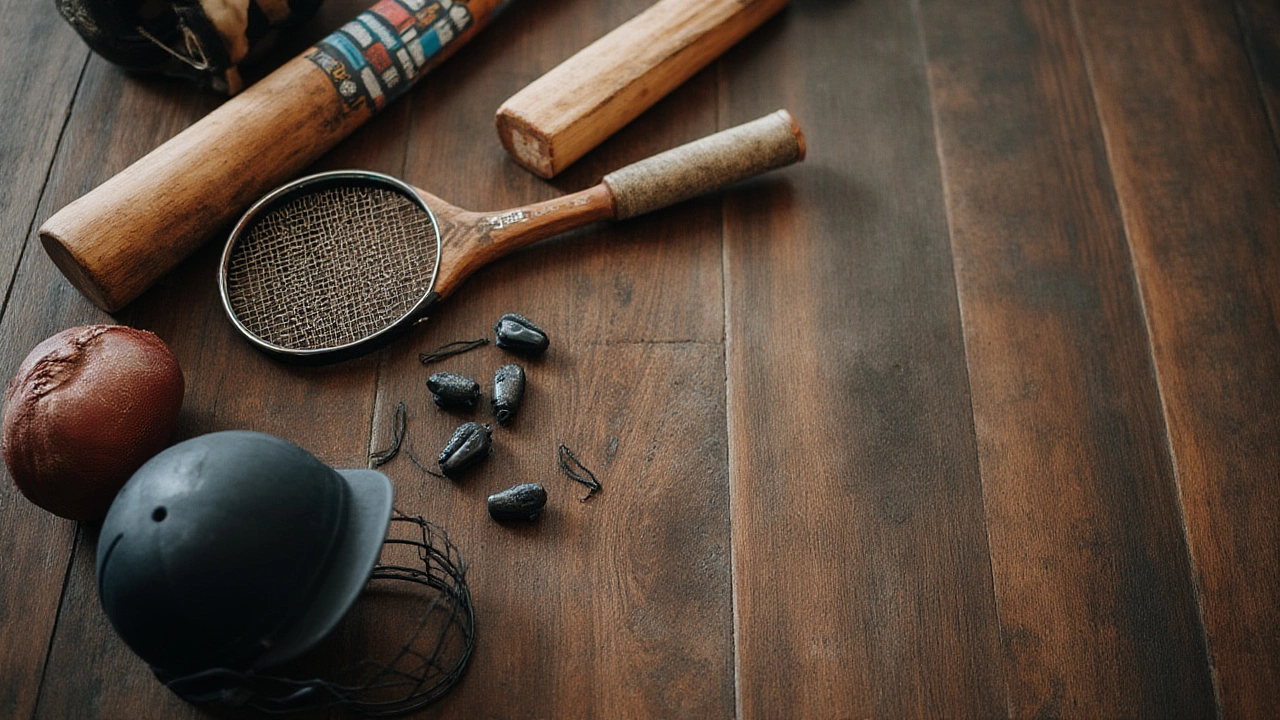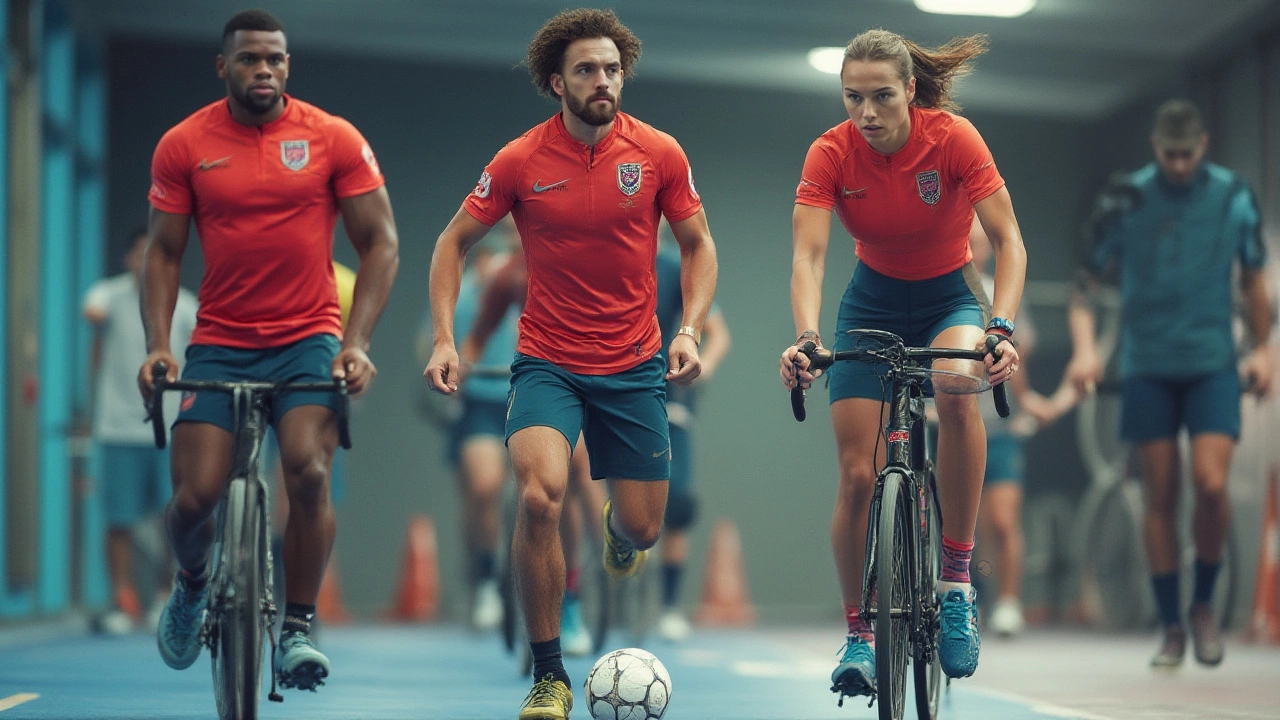Key Characteristics of Sports Equipment: What Sets Quality Gear Apart

If you’ve ever wondered why a tennis racket feels so light in your hand or how a pair of running shoes cushions every step, you’re already noticing the surprisingly complex world of sports equipment. From the bounce in a basketball to the glide of a hockey puck, every piece of gear has been shaped by years of tweaks, breakthroughs, and sometimes surprising mistakes. Some people think a ball is just a ball, but a deeper look immediately shows there’s a lot more going on. Manufacturing technology, athlete feedback, and even the weather all leave fingerprints on the gear athletes trust. It’s not just about looking good or having the latest flashy model—true sports equipment solves problems, boosts your performance, and keeps you safer than you realize. So, what actually makes sports gear good—or even great? Let's break it down.
Materials and Build: The Foundation of Every Piece
The first thing you notice when picking up any sports equipment is how it feels. The material shapes that entire experience, from the grip of your golf club to the flexibility of your yoga mat. Sports equipment makers obsess over this because the right (or wrong) material can make or break your performance. Take soccer balls, for example. Top-tier balls use polyurethane, which keeps them water-resistant and maintains perfect roundness. Cheaper versions often swap in PVC, which might cut costs but leads to awkward game-play, especially in the rain.
Let’s talk stats. According to the International Tennis Federation, a pro-level tennis racket must weigh between 250 to 350 grams. It seems basic, but even a 10-gram difference changes how you swing. Companies put in years of research, using carbon fiber, alloys, and hybrid materials to chase the sweet spot between power and control. It’s not just about sports with fancy gear either. Even basic dumbbells rely on cast iron or rubber for safety and handling. Bad materials can lead to dangerous breaks—nobody wants shattered glass from a cheap water bottle mid-marathon!
Then there’s clothing. Think of basketball jerseys: the switch from heavy cotton to moisture-wicking polyester wasn’t about style. It cut sweat weight so players stay lighter and cooler on the court. Fabrics are now engineered for breathability, stretch, and insulation, tailored for the sport and even different weather conditions. Runners in the Berlin Marathon, for example, already know that a 100-gram difference in shoe weight can shave precious seconds off a 10k time. Little details like anti-slip textures on yoga mats help prevent injuries—and sweat puddles.
Material choices go deep. Golf balls have a rubber core and dimpled urethane cover, a design that minimizes air resistance while maximizing control. Protective helmets combine ABS plastics for the shell with shock-absorbing foam liners. Even tiny tweaks, like how football gloves are textured for grip, can push performance to the next level. The best equipment always starts with the smartest materials.
Design and Ergonomics: The Human Factor
No matter how strong or light a thing is, it’s useless if it doesn’t fit the person using it. That’s where design and ergonomics come in. Today’s gear is the result of thousands of hours spent watching how real people move, swing, kick, and sweat. Designers adjust every angle, curve, and pad to make sports equipment feel like an extension of your body.
Take running shoes. It’s not just about cool colors or trendy logos—the width, arch support, cushioning, and heel drop make or break your stride. A 2023 survey from Running World Magazine showed that 84% of runners switched brands for more comfort, not style. That’s why shoe companies now use 3D foot scans. They’re using real data to fit real feet, not some average imaginary foot in a lab. Even the tread pattern is tested, with high-speed cameras analyzing grip in both wet and dry weather conditions.
Let’s look at another example: bicycles. Modern bikes borrow ideas from Formula 1, like aerodynamic shaping and carbon-fiber frames. Ergonomic handlebars and adjustable saddles reflect how bodies bend during hours-long rides. In the 2024 Olympic Games, cyclists spent days with sports scientists mapping out handlebar shapes for the least wind resistance. And those small gel pads in cycling gloves? They reduce nerve compression, saving hands from numbness during tough rides. Design isn’t just about looks—it’s about boosting endurance, power, and control in real-life situations.
Even seemingly simple things, like pickleball paddles or baseball gloves, go through countless prototypes. Brands invite athletes, both pros and amateurs, to test new models, collecting hundreds of notes about feel, reactions, and even what sounds satisfying when balls strike. For adaptive sports equipment, design gets even more creative—custom prosthetics for runners, wheelchairs shaped for tight turns on a basketball court. Good design means everyone can play.

Performance, Safety, and Compliance
It’s easy to get caught up in how gear looks or feels, but at the end of the day, it’s only as good as its safety record. This is where things get technical. Every league, from soccer to swimming, sets strict standards for what’s allowed on the field or in the pool. If a piece of sports equipment doesn’t pass, it’s out—no matter how expensive or cool it is.
For example, NFL helmets must meet impact resistance tests set by the National Operating Committee on Standards for Athletic Equipment. In 2024, new smart helmets with built-in sensors reduced on-field concussions by 12%—not because of magic, but better materials and smarter design. Bicycle helmets have to pass the European EN 1078 or US CPSC test, meaning they’ll protect your brain at drops up to 1.5 meters. That’s why buying a no-name or knockoff helmet puts you at real risk.
Then there’s the issue of performance. Every piece of equipment is measured for things like bounce, spin, or aerodynamics. The FIFA Quality Program inspects around 500 footballs every year, using lab machines to test everything from roundness, air retention, and water uptake. Failed tests often send dozens of designs back to the drawing board. Genuinely good gear always matches strict sport regulations. That’s why two seemingly identical basketballs can feel so different: one passed USA Basketball’s weight, bounce, and grip tests, the other just looks the part.
The numbers tell the story. Here’s a quick breakdown of standard gear checks:
| Sport | Key Test | Standard |
|---|---|---|
| Tennis | Racket Weight | 250-350g |
| Football | Ball Circumference | 68-70cm |
| Bicycle | Helmet Impact Absorption | EN 1078/CPSC |
| Baseball | Bat Diameter | Max 2.61 inch |
Even new tech, like sensor-tracked baseball bats, has to get league approval before being allowed in games. And every year, dozens of “hot” gear models are banned for giving unfair advantages or breaking safety codes. Compliance isn’t just about rules; it keeps athletes safe and makes sure your game outcome isn’t down to some sneaky tech hack.
Tips for Choosing and Caring for Sports Equipment
With so many options out there, picking the right sports gear can trip up even experienced athletes. So how do you make sure you’re not wasting money or risking your safety? Here are some practical tips:
- sports equipment should always feel right in your hands. If it pinches, slips, or throws off your balance, keep looking.
- Check for official stamps or labels. Look for safety certifications or the sport’s governing body logo. For example, look for “NOCSAE” on helmets or “FIFA Quality Pro” on footballs. No stamp, skip it.
- Test before you buy. Swing that bat, stretch those gloves, bounce that ball. Most stores are cool with it, and it’s the only way to spot uncomfortable gear before you hit the field.
- When testing running shoes, always try them late in the day—your feet swell as you walk, which mirrors game-time conditions better than a morning test.
- Don’t skimp on maintenance. Air up your basketball weekly, wash that yoga mat, and store bats and rackets out of direct sunlight. Well-cared gear lasts longer and performs better.
- Replace safety gear after a fall or impact, even if it looks okay. Micro-cracks can hide underneath the surface, especially in helmets and pads.
One last secret: keep a gear journal. It sounds nerdy, but logging how your equipment feels, how quickly it wears out, and when you replace it helps spot patterns and makes future upgrades way easier. Trust your gut, take your time, and remember—great sports equipment doesn’t make you a champion, but it sure makes every training session better.
